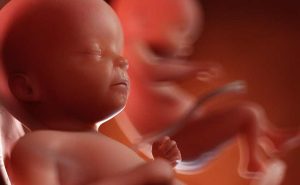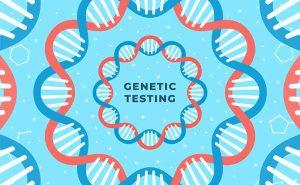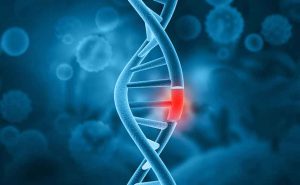Learn about the mechanism of heredity and what is inherited between parents and children. Get insights supervised by a doctor. Understand genetic inheritance for better health.
- Introduction
- What is Heredity?
- Inheritance Between Parents and Children
- Conclusion
Introduction
- You have a complex about a part of your face
- You have a chronic illness
In this case, you might be concerned about whether your complexes or illnesses will be inherited by your child.
Not all of your features will be inherited by your child, and not all inherited traits will be outwardly expressed. Some traits may be directly inherited, while others may not manifest outwardly, and there are also cases where traits are inherited due to factors related to those of the parents.
This article will explain the items that are believed to be inherited from parents to children.
If you’re worried about whether your chronic illness will be passed on to your child, this article may help alleviate your concerns. Please use the knowledge in this article to ease your anxiety and prepare for welcoming your child.
What is Heredity?
Inheritance is the phenomenon where the characteristics of parents are passed on to their children. It involves the use of genes, which transmit traits to offspring, and genes contain information about every characteristic of humans.
For example, there are over 25,000 types of genes in humans, including those that determine facial features. Genes are collections of DNA.
DNA resides within the nucleus of cells and takes the form of chromosomes to stabilize within the nucleus. In other words, DNA is contained within chromosomes, and DNA acts as genes.
There are two types of chromosomes: autosomes and sex chromosomes. Humans have a total of 46 chromosomes, consisting of 44 autosomes and 2 sex chromosomes. Through the inheritance of these two types of chromosomes from parents to offspring, the characteristics of the parents manifest in their children.
This article will explain the four modes of inheritance through which chromosomes are passed from parents to children.
- Autosomal Dominant Inheritance
- Autosomal Recessive Inheritance
- X-Linked Dominant Inheritance
- X-Linked Recessive Inheritance
Autosomal Dominant Inheritance
Autosomal dominant inheritance occurs when one parent carries a gene that suppresses the characteristics of the other parent’s gene. The gene responsible for this suppression is called the dominant gene, and this mode of inheritance is referred to as dominant inheritance.
When one of the parents carries a dominant gene that suppresses the expression of another gene within the same gene pair, the dominant gene has a 50% chance of being passed on to the child.
Since it is autosomal inheritance, it occurs with a 50% chance regardless of gender. Furthermore, even if an older sibling has already inherited the dominant gene, the probability of the next child inheriting the dominant gene remains at 50%.
Autosomal Recessive Inheritance
Autosomal recessive inheritance occurs when both parents carry the same recessive gene for a particular trait, and this gene is expressed in their child. The gene responsible for this expression is called the recessive gene, and this mode of inheritance is referred to as recessive inheritance.
When both parents carry one normal gene and one recessive gene for the trait, they do not exhibit the traits associated with the recessive gene. Instead, they are carriers (asymptomatic). Only when the child inherits both recessive genes from both parents does the trait manifest, and this occurs with a probability of 25%.
Even if an older sibling has already inherited the recessive gene, the probability of the next child inheriting the recessive gene remains at 25%. If one parent does not carry the same recessive gene, it is unlikely for the affected child to be born, although carrier children may still be possible.
X-Linked Inheritance
It’s a genetic phenomenon that occurs on the sex chromosomes.
X-linked inheritance refers to the presence of abnormal genes on the X chromosome, which are called X-linked genes.
What are Sex Chromosomes?
The sex chromosomes consist of the X chromosome and the Y chromosome. It’s the combination of these chromosomes that determines sex.
- XX chromosome pairing results in a female
- XY chromosome pairing results in a male
X-Linked Dominant Inheritance (Incompletely Dominant Inheritance)
A normal X chromosome is denoted as “X”, and an abnormal X chromosome is denoted as “x”, explaining “x” as dominant.
When a daughter is born to a father with abnormal X chromosome (xY) and a mother with normal X chromosomes (XX), there is a 100% chance of inheriting the abnormal gene and thus, exhibiting symptoms. However, since the normal X chromosome can sometimes suppress the effects of the abnormal x chromosome, symptoms may be milder.
Sons born to these parents do not inherit the abnormality from the father. This is because sons inherit only the Y chromosome from the father and a normal X chromosome from the mother.
Children of a mother with abnormality on one of her X chromosomes (xX) and a father with normal X chromosomes (XY) have a 50% chance of exhibiting symptoms regardless of gender.
X-Linked Recessive Inheritance (Incompletely Recessive Inheritance)
A normal X chromosome is denoted as “X”, and an abnormal X chromosome is denoted as “x”, with “x” being described as recessive.
Daughters of a father with abnormal chromosomes (xY) and a mother with normal X chromosomes (XX) all become carriers. Carriers possess abnormal genes but do not exhibit symptoms of the disease. Since only the Y chromosome is inherited from the father (xY), sons do not inherit the abnormality.
Children of a mother with abnormalities on one of her X chromosomes (xX) and a father with normal X chromosomes (XY) all daughters become carriers. Sons have a 50% chance of exhibiting symptoms.
Children of a mother with abnormalities on both X chromosomes (xx) and a father with normal chromosomes (XY) all daughters become carriers. Sons will invariably inherit and exhibit the abnormality.
Inheritance Between Parents and Children
This section will explain characteristics that are believed to be inherited from parents to children.
Focusing on whether they are inherited or not, we’ll examine the following three types of characteristics.
- External inheritance, such as appearance
- Internal inheritance, such as personality traits
- Genetic inheritance of diseases
Genetic Inheritance of Physical Traits
Height
Height is inherited. About 80% of a child’s height is influenced by genetic factors inherited from their parents. However, this doesn’t guarantee that the child will be exactly the same height as their parents.
In addition to genetic factors, environmental factors also play a role in determining height. Height isn’t determined by just one gene; it’s a result of the interaction of multiple genes.
It’s believed that there are at least 600 or more genes involved in determining height. The genetics of height are still not fully understood, and not all height-determining genes have been discovered yet.
Facial Features
Facial features are inherited. It’s commonly said that men resemble their mothers and women resemble their fathers, but this has not been scientifically proven.
According to a study conducted by researchers at Erasmus MC University Medical Center in the Netherlands in 2012, they discovered five genes that influence facial features. However, since the study targeted Europeans, it’s unclear whether these findings apply to Asians.
The exact roles of these genes are not fully understood, but it has been determined that they are located on autosomes.
Autosomes are inherited equally from both parents. Therefore, facial features are influenced by both parents.
Ears
It’s inherited, especially the degree of ear protrusion and hereditary hearing loss are considered to be highly heritable.
Ear protrusion refers to the degree to which the ear structure, such as the ear canal, is visible when viewed from the front.
Hereditary hearing loss is a condition where hearing impairment is present from birth. The cause is abnormalities in genes.
When inherited from both parents, if the causative genes for hereditary hearing loss follow autosomal recessive inheritance, the child will develop hereditary hearing loss. Approximately 70% of hereditary hearing loss follows autosomal recessive inheritance, while the remaining 30% follows other genetic patterns.
Teeth Alignment
Dental alignment is also inherited. It’s said that 80% of dental alignment is influenced by genetics, while about 20% is due to acquired factors. Similar to the resemblance to one’s mother or father in appearance, there’s a possibility that dental alignment may resemble one parent or the other.
Additionally, the size of teeth, jaw size, and whether the upper or lower jaw protrudes (overbite or underbite) are also inherited.
Many cases of poor dental alignment due to genetics involve an imbalance between jaw size and tooth size or the inheritance of protruding upper or lower jaws from both parents.
Dental alignment can also be worsened by lifestyle habits, especially during childhood. Be cautious if you have the following habits.
- Thumb sucking
- Tongue habits (pushing teeth with tongue, sticking tongue out)
- Resting chin on hand
- Poor posture
- Avoiding hard foods
It’s said that dental alignment can be negatively affected, especially if these lifestyle habits are present during childhood.

Genetic Inheritance of Personality and Internal Traits
Personality
Personality is 50% hereditary, with the remaining 50% being influenced by the environment.
The traits inherited from both parents are likely to influence personality. One example is genes related to serotonin secretion.
Serotonin is a neurotransmitter that stabilizes mood. A deficiency in serotonin can lead to mental instability such as irritability or anxiety. Children of parents with low serotonin secretion may exhibit mental instability in their personality.
Furthermore, personality is greatly influenced by the environment in which one grows up. Even if individuals have the same genes, their personalities can vary significantly depending on how they were raised by their parents.
For instance, the presence or absence of abuse greatly affects a child’s personality.
Intelligence and Learning Abilities
Intelligence and learning ability are inherited. It’s believed that around 70% of individual differences in academic performance are due to genetics. Furthermore, intelligence and learning ability are also influenced by the learning environment.
Physical Abilities
It’s inherited. According to a study by Marleen H M De Moor and colleagues in 2007, 66% of motor skills are determined by genetic factors.
Currently, there are over 200 discovered genes believed to be related to motor skills.
Genetic Inheritance of Diseases
Inherited Disorders
Developmental disorders are conditions characterized by behavioral and emotional traits in infants due to differences in the way the brain functions from birth. (quoted from Mama)
Quoted from: Developmental Disorders, Ministry of Health, Labour and Welfare, Japan: https://www.mhlw.go.jp/kokoro/know/disease_develop.html
In this section, we’ll explain the following two conditions.
- Autism Spectrum Disorders
- ADHD
Developmental disorders are not solely caused by genetics. They arise from a combination of genetic and environmental factors.
Autism Spectrum Disorders
While there are genes involved, it’s not guaranteed that individuals will develop Autism Spectrum Disorder (ASD). The condition arises from a combination of genetic and environmental factors.
Environmental factors thought to contribute to ASD include the following nine.
- Smoking during early pregnancy
- Mercury exposure
- Intake of organophosphate pesticides
- Nutrient intake such as vitamins
- Advanced maternal age at the time of conception
- Gestational age
- Whether the birth was via cesarean section
- Pregnancy during the summer
- Pregnancy resulting from assisted reproductive technology
ADHD
ADHD is considered to be highly heritable. If a parent has ADHD, the likelihood of their child also having ADHD is believed to be 5 to 10 times higher than that of a child with non-ADHD parents.
Furthermore, environmental factors can interfere with the proper functioning of genes, leading to the development of ADHD even when the genes are normal.
Three environmental factors thought to be associated with ADHD.
- Maternal smoking during pregnancy
- Maternal alcohol consumption during pregnancy
- Stress during early childhood

Other Genetic Diseases and Disorders
In this section, we will explain the following eight diseases that are commonly believed to be hereditary between parents and children.
- Depression
- Schizophrenia
- Epilepsy
- Diabetes
- Hypertension
- Allergies
- Cancer
These diseases themselves are not directly inherited by children. Rather, characteristics that predispose individuals to these diseases are passed down to children.
Depression
Depression can be categorized into endogenous (internal) and exogenous (external) types.
Endogenous depression is caused by factors such as illness or medication.
Exogenous depression involves various environmental and genetic factors, but environmental factors are considered to play a larger role than genetics.
Schizophrenia
Schizophrenia, like endogenous depression, also involves a combination of environmental and genetic factors in its onset.
Currently, specific genes related to the onset have not been identified, but genetics are believed to play a larger role in schizophrenia compared to depression.
Epilepsy
If a parent has epilepsy, the likelihood of their child developing epilepsy is approximately 4-6%, which is about 2-3 times higher than that of children born to parents without epilepsy.
Diabetes
Diabetes itself is not directly inherited, but the genes associated with its cause are hereditary. In epidemiological studies, it has been observed that if a parent has type 2 diabetes, their child is 3-4 times more likely to develop the condition compared to children of parents without type 2 diabetes.
Hypertension
Hypertension itself is not inherited, but a predisposition to hypertension can be inherited. If parents have hypertension, the probability of their child developing hypertension is as follows.
- If both parents have hypertension, the probability of their child developing hypertension is approximately 50%
- If one parent has hypertension, the probability of their child developing hypertension is approximately 30%
Hypertension is not only influenced by genetic factors but also by a combination of environmental factors.
There are five main environmental factors considered to contribute to hypertension.
- Excessive salt intake
- Obesity
- Alcohol consumption
- Lack of exercise
- Stress
Allergies
Susceptibility to allergies is hereditary, but allergies themselves are not directly inherited. Just because a parent has allergies does not necessarily mean their child will have allergies as well. In addition to genetic factors, environmental factors are also one of the causes of allergy development.
Cancer
Cancer itself does not directly pass down through generations. However, there are cases where the genes responsible for causing cancer can be inherited.
Genetic mutations can occur, causing adverse effects on cells, one of which could be cancer. Most mutations that lead to cancer occur after birth and are not passed on to the next generation.
However, if there are mutations in the reproductive cells of both parents, and these mutations are known to cause cancer, then the child may be more susceptible to developing cancer. Reproductive cells refer to sperm in males and eggs in females.
Inheritance of Congenital Disorders
Congenital diseases are conditions that occur due to abnormalities in genes present at birth.
The congenital diseases covered in this section are as follows.
- Chromosomal abnormalities such as Down syndrome
- Monogenic disorders
- Multifactorial inheritance
- Environmental factors or teratogenic factors
Other than monogenic disorders, genes alone are not the cause. Various genes and environmental factors combine to cause the onset of illness.
Chromosomal Abnormalities (e.g., Down Syndrome)
In some cases, it can be inherited. However, it is more common for children with chromosomal abnormalities due to spontaneous mutations to be born to parents without genetic issues.
When Down syndrome is caused by genetics, it occurs through inheritance from parents who are carriers of Robertsonian translocation. About 75% of Robertsonian translocations are said to occur between chromosomes 13 and 14. Following that, 14 and 21, and 21 and 21 are more frequent, while others are rare. Currently, no adverse effects on the body have been found in chromosomes affected by Robertsonian translocation.
Specifically, it is estimated that the probability of a child with Down syndrome being born to a mother who is a carrier of Robertsonian translocation is 10-15%, while in the case of the father, it is less than 1%. However, depending on the location of the translocation, this probability can reach 100%.
NIPT (Non-Invasive Prenatal Testing) for Chromosomal Abnormalities
NIPT (Non-Invasive Prenatal Testing) is a test conducted during pregnancy to check for chromosomal abnormalities in the baby while it is in the mother’s womb. It is a non-invasive test that involves taking a sample of the mother’s blood for examination.
Chromosomal abnormalities such as Down syndrome can also be detected through NIPT (Non-Invasive Prenatal Testing).
It is a test that meets the needs of parents who want to prepare thoroughly for the baby coming into the world.
Single Gene Disorders
It’s hereditary.
Monogenic disorders refer to diseases caused by mutations in a single gene. Many rare diseases fall under this category. The probability of inheriting the disease from parents varies depending on the mode of inheritance.
When the causative gene follows autosomal dominant inheritance, the following three diseases manifest.
- Huntington’s disease
- Familial amyloid polyneuropathy
- Familial adenomatous polyposis syndrome
When the causative gene follows autosomal recessive inheritance, the following four diseases manifest.
- Phenylketonuria
- Wilson’s disease
- Werner syndrome
- Niemann-Pick disease
When the causative gene follows X-linked inheritance, the following three diseases manifest.
- Hemophilia
- Duchenne muscular dystrophy
- Hunter syndrome
Multifactorial Inheritance
Illnesses themselves do not inherit, but predispositions to certain illnesses can be inherited.
Polygenic inheritance refers to the way genetics manifest through interactions between genetic and environmental factors. While monogenic disorders stem from a single gene, polygenic disorders cannot be explained by a single gene alone.
Compared to children whose parents don’t have genetic factors, those whose parents do have genetic factors are more likely to develop illnesses.
As examples of polygenic diseases, here are three.
- Essential hypertension
- Diabetes mellitus
- Heart disease
Environmental and Teratogenic Factors
Teratogenic factors are hereditary.
Teratogenicity refers to the property of causing malformations. Even if parents have teratogenic factors in their genes, it does not necessarily mean that the child will appear as malformed.
Furthermore, there are cases where mutations occur in children due to environmental factors with teratogenicity. In other words, even if neither parent has teratogenic factors in their genes, the child may still exhibit malformations.
The environmental factors thought to have teratogenicity include the following six.
- Exposure to radiation
- Specific medications (including those contraindicated during pregnancy)
- Alcohol
- Malnutrition
- Specific infections in the mother
- Genetic disorders
Conclusion
This article summarizes traits believed to be inherited from parents to children.
Apart from monogenic disorders, traits can manifest through a combination of genetic and environmental factors. Not all of your traits will necessarily appear in your children.
Among the inherited traits, chromosomal abnormalities can be detected through prenatal testing.
Chromosomal abnormalities can be inherited from parents to children or can occur due to spontaneous mutations. Until testing is done, it’s not known whether a child has a genetic condition.
If a chromosomal abnormality is detected in a prenatal test, it allows for early preparation for the arrival of the baby.
【References】
- MSD Manual – Inheritance of Monogenic Disorders
- Riken – Unraveling Genetic Features Related to Japanese Height
- PLOS – A Genome-Wide Association Study Identifies Five Loci Influencing Facial Morphology in Europeans
- Saitama Children’s Medical Center Genetics Department – Information on Hereditary Hearing Loss
- J-STAGE – Cognitive Abilities and Genetics
- CARLS – Behavioral Genetic Study on Academic Performance and Educational Disparities
- Health Sciences University – Congenital Brain Activity and Genetic Factors in Top Athletes
- Nature – Loss of ACTN3 gene function alters mouse muscle metabolism and shows evidence of positive selection in humans
- Japan Agency for Medical Research and Development – Elucidating the Molecular Mechanisms by Which Gene Mutations Occur in Autism Spectrum Disorder Patients, Causing Abnormalities in Brain Development and Sociability ―Expectations for the Development of Treatment Strategies for Autism Spectrum Disorder―
- National Institute of Public Health – Environmental Factors in Autism
- Kobe University – Identification of Novel Genes for Developmental Disorders
- MedicalNote – ADHD and Genetics – What are the chances of inheriting ADHD if a parent has it?
- Niigata University Brain Research Institute – Current Research on Schizophrenia
- Japan Agency for Medical Research and Development – Discovery of Genetic Mutations Strongly Associated with the Onset of Schizophrenia through Genome Analysis!
- Epilepsy Information Center – Marriage, Pregnancy, and Childbirth for Individuals with Epilepsy
- Riken – Discovery of the gene “KCNQ1” associated with type 2 diabetes
- Japan Endocrine Society – Type 2 Diabetes
- Novartis Pharma – Why Does Hypertension Occur?
- Yokohama City University – Proof that the LPIN1 gene is one of the causative genes for essential hypertension
- Japan Medical Association – Genetic Factors of Human Hypertension
- Yamanashi University School of Medicine Hospital – Is Food Allergy Inherited?
- Japan Atopy Association – Genetic Factors
- Kyushu University – Causes of Atopic Dermatitis
- Japanese Psychological Association – Is Personality Really Determined by Genetics?
- NIH – Genome-wide Linkage Scan for Athlete Status in 700 British Female DZ Twin Pairs
- e-HealthNet – Physical Abilities and Genetics (Genetic Polymorphism)
- Japanese Society of Psychiatry and Neurology – Epigenetics Hypothesis of Attention-Deficit/Hyperactivity Disorder Onset
- e-HealthNet – What is Hypertension?
- Kanagawa Prefecture Association of Preventive Medicine – Genes and Lifestyle Diseases
- Ministry of Health, Labour and Welfare – Developmental Disorders
Learn about the mechanism of heredity and what is inherited between parents and children. Get insights supervised by a doctor. Understand genetic inheritance for better health.
Article Editorial Supervisor

Dr. Keizo Nitta
Director, Hiro Clinic Sapporo Station Clinic
With the increasing trend of advanced maternal age at childbirth, the demand for NIPT (Non-Invasive Prenatal Testing) is on the rise. Moreover, we anticipate that in the future, the accuracy and scope of NIPT will continue to expand. At our clinic, we believe it is our obligation to appropriately communicate the information that can be known and desired in current medical practice to expectant mothers.
Alongside the right to know, there also exists the right not to know. We consider it a medical duty to refrain from disclosing information that the patient does not wish to know. At our clinic, you have the option to choose the information you want to know.
We encourage you to consult with us to determine which plan is best for you and to select the testing that suits your needs.
Career Summary
1996 Saitama Medical University Hospital
2002 Kanagawa Children’s Medical Center
2004 Kokumin Kyosai Yokohama Minami Kyosai Hospital
2010 Yokosuka Municipal Uwamachi Hospital
2012 Municipal Mikasa General Hospital
2015 Medical Corporation Ryokuryokai Nagunuma Pediatrics
2019 Town Minami Horo Hospital (National Health Insurance)
Qualifications
Member of the Allergy Society
Member of the Pediatric Allergy Society
 中文
中文





















